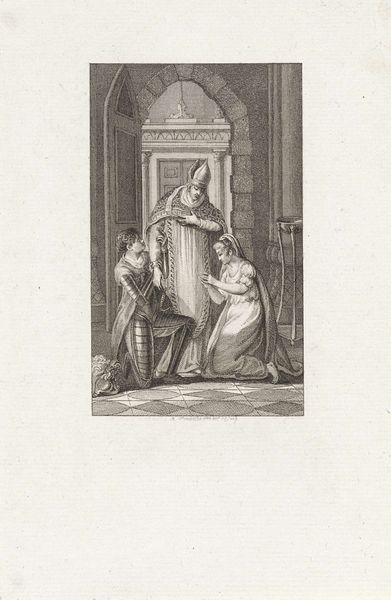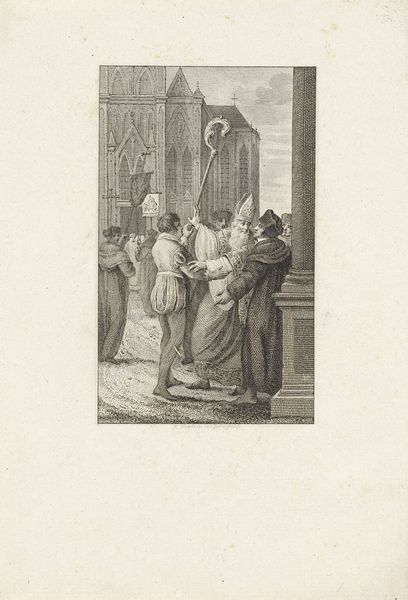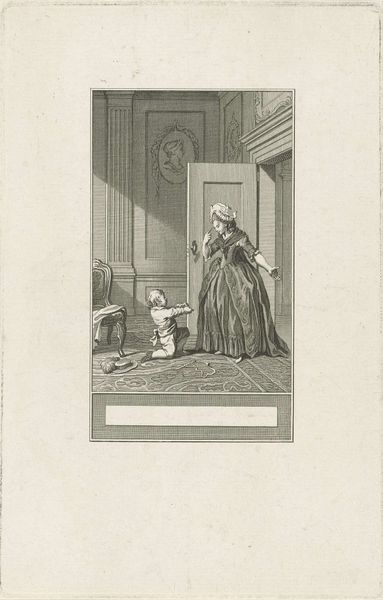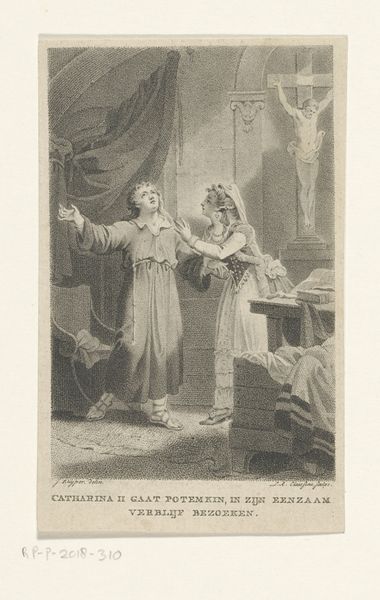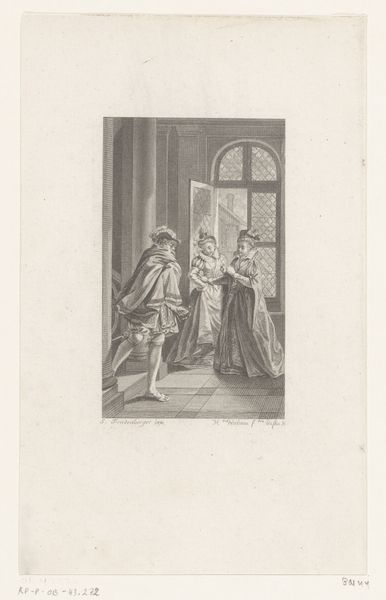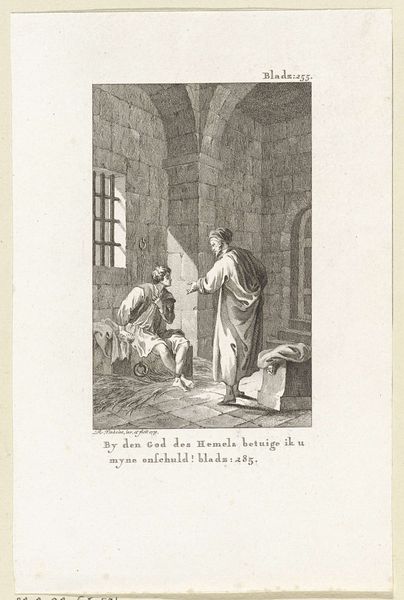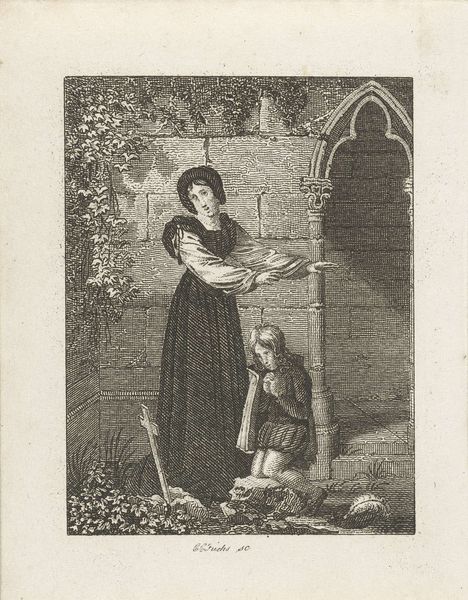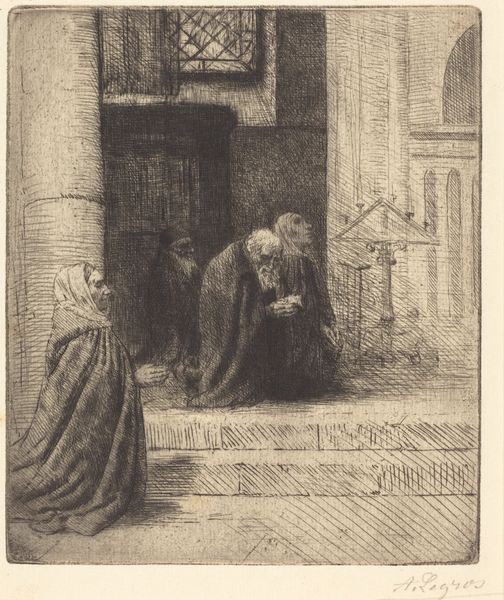
Dimensions: height 211 mm, width 125 mm
Copyright: Rijks Museum: Open Domain
This print, "Paus Gregorius VII," was made by Johann Wilhelm Kaiser I in the 19th century, using a technique called etching. Etching is an indirect process, using acid to bite into a metal plate, usually copper or zinc. The etcher covers the plate with a waxy ground, then scratches through it with a needle to expose the metal. The plate is then immersed in acid, which eats away at the exposed lines. The longer the plate remains in the acid, the deeper and darker the lines will be. Kaiser was a master of this technique, and you can see the level of detail he achieved in the fine lines and shading of the print. The process is labor-intensive, involving careful preparation and skilled execution. It required specialized tools and knowledge, representing a highly developed craft tradition. Considering these material and social processes can teach us to look beyond the image itself, and appreciate the layers of skill, labor, and cultural meaning embedded in the artwork.
Comments
No comments
Be the first to comment and join the conversation on the ultimate creative platform.


